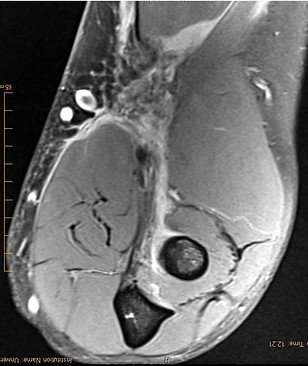Orthopaedic Surgeon
Distal Biceps Rupture
What is the distal biceps?
During heavy lifting, weight lifting, or any trauma, the distal biceps can rupture and tear off of the radius. This is usually met with pain, bruising around the elbow, and a visible deformity as the muscle retracts into the proximal shoulder.
What causes a distal biceps rupture?
How is a distal biceps rupture treated?
The biceps is a muscle in the front of your arm that is involved in elbow flexion and forearm supination. The "bi" in biceps means two muscles in the upper arm come together to form one tendon that inserts into the radius bone of the forearm.
Most distal biceps ruptures are treated with surgery. It is important if you suspect a distal biceps rupture that you meet with a physician as soon as possible after the injury. Waiting several weeks or months on a distal biceps rupture can lead to scar tissue that makes a surgical repair much more complicated.
The distal biceps tear typically results in about a 30% loss in flexion strength and a 40% loss in supination strength. For some patients, this strength loss may not be functioning limiting to them and they may not need surgery. The cosmetic and cramping pain may be other reasons for operative fixation.
We typically fix the distal biceps with suture and reinsert the tendon back into a drill hole in the radius. The tendon is held in place with a button. Over time, the tendon will reattach to the bone. We will gradually get your motion and strength back with physical therapy.


The red arrow points to the retracted muscle. The tendon should be attaching to the circular bone at the bottom of the image.


This image demonstrates the bruising seen with a distal biceps rupture.

We place a suture through the distal biceps and secure it back into the forearm bone.
